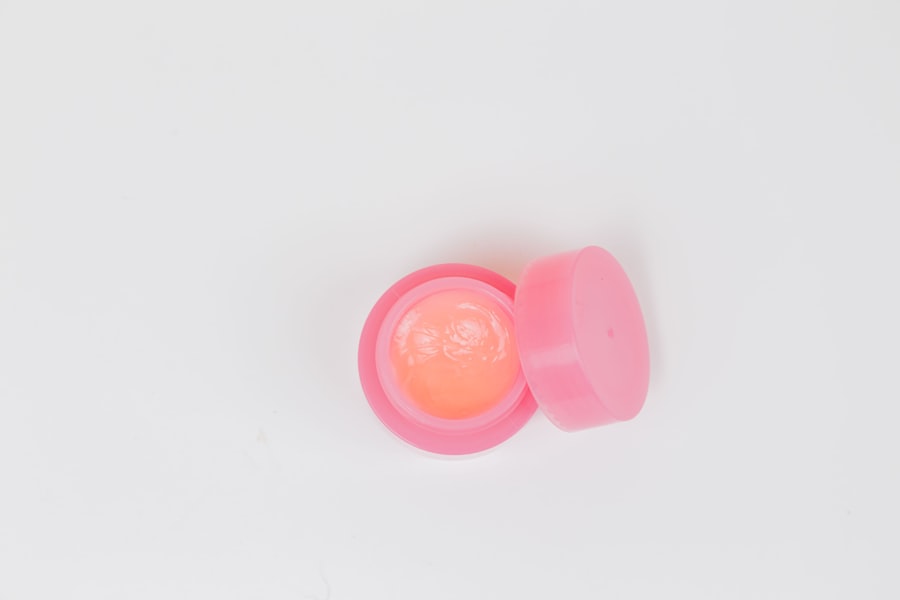When it comes to hair removal, you have a plethora of options at your disposal, each designed to cater to different preferences and skin types. Hair remover products can be broadly categorized into several types, including depilatory creams, waxes, and shaving tools. Depilatory creams work by chemically dissolving the hair shaft, allowing for easy removal.
These products often contain active ingredients like calcium thioglycolate or potassium thioglycolate, which break down the protein structure of the hair. On the other hand, waxing involves applying a sticky substance to the skin, which adheres to the hair and is then pulled away, removing the hair from the root. Shaving, perhaps the most common method, uses a razor to cut hair at the skin’s surface.
As you explore these options, it’s essential to consider your skin type and hair texture.
Additionally, your skin’s sensitivity plays a crucial role in determining which product will be most effective and safe for you.
For instance, if you have sensitive skin, you might want to avoid harsh chemical depilatories and opt for gentler alternatives. Understanding the various hair remover products available will empower you to make informed choices that align with your personal grooming needs.
Key Takeaways
- Hair remover products come in various forms such as creams, gels, and lotions, and work by breaking down the protein structure of the hair.
- Potential risks and side effects of hair remover products include skin irritation, chemical burns, and allergic reactions, so it’s important to do a patch test before use.
- Individuals with sensitive skin or allergies should be cautious when using hair remover products and consider alternative methods such as shaving or waxing.
- Proper application and usage of hair remover products is crucial for safety and effectiveness, so always follow the instructions on the packaging.
- Alternative hair removal methods like shaving, waxing, and laser treatments may be considered for those who experience adverse reactions to hair remover products.
Potential Risks and Side Effects
While hair remover products can offer convenience and efficiency, they are not without their risks and potential side effects. One of the most common issues associated with these products is skin irritation. This can manifest as redness, itching, or a burning sensation, particularly if you have sensitive skin or if the product is left on for too long.
Chemical depilatories, in particular, can cause adverse reactions due to their strong ingredients. It’s crucial to perform a patch test before using any new product extensively; this simple step can help you gauge how your skin will react. In addition to irritation, there are other potential side effects to consider.
For example, waxing can lead to ingrown hairs, which occur when hair grows back into the skin instead of outward. This can result in painful bumps and sometimes even infections if not treated properly. Furthermore, some individuals may experience allergic reactions to certain ingredients found in hair removal products.
Symptoms can range from mild rashes to severe reactions requiring medical attention. Being aware of these risks allows you to take proactive measures to minimize them and choose products that are less likely to cause adverse effects.
Skin Sensitivity and Allergies
Your skin’s sensitivity plays a significant role in how well you tolerate various hair removal methods. If you have sensitive skin, you may find that certain products cause discomfort or adverse reactions. For instance, chemical depilatories can be particularly harsh on delicate skin types, leading to redness or burning sensations.
It’s essential to read labels carefully and choose products specifically formulated for sensitive skin if this applies to you. Many brands offer hypoallergenic options that are free from common irritants and fragrances. Allergies are another critical factor to consider when selecting hair remover products.
Ingredients such as fragrances, preservatives, and certain active compounds can trigger allergic reactions in some individuals. If you have a history of allergies or sensitive skin conditions like eczema or psoriasis, it’s wise to consult with a dermatologist before trying new products. They can recommend suitable options tailored to your specific needs and help you avoid potential allergens that could exacerbate your skin issues.
Proper Application and Usage
| Proper Application and Usage | Metrics |
|---|---|
| Productivity | Units produced per hour |
| Efficiency | Percentage of resources utilized |
| Quality | Defect rate |
| Safety | Number of incidents |
To achieve the best results with hair remover products while minimizing risks, proper application and usage are paramount. Each product comes with specific instructions that should be followed meticulously. For instance, when using depilatory creams, it’s essential to apply an even layer over the area without rubbing it in too vigorously.
Leaving the cream on for longer than recommended can lead to chemical burns or excessive irritation. Always adhere to the suggested time frame and perform a patch test beforehand to ensure compatibility with your skin. When it comes to waxing, preparation is key.
Exfoliating the area a day or two before waxing can help remove dead skin cells and reduce the likelihood of ingrown hairs. Additionally, ensure that your skin is clean and dry before applying wax. After waxing, soothing lotions or aloe vera gel can help calm any irritation and promote healing.
Regardless of the method you choose, taking the time to understand proper application techniques will enhance your experience and lead to better outcomes.
Alternative Hair Removal Methods
If traditional hair removal methods don’t suit your needs or preferences, there are several alternative options worth exploring. Laser hair removal has gained popularity as a long-term solution for unwanted hair. This method uses concentrated light beams to target hair follicles, effectively reducing hair growth over time.
While it may require multiple sessions for optimal results, many individuals find it a worthwhile investment for its long-lasting effects. Another alternative is electrolysis, which involves using an electric current to destroy individual hair follicles. This method is FDA-approved for permanent hair removal and is suitable for all skin types and hair colors.
However, it can be time-consuming since each hair is treated individually. If you’re looking for something less permanent but still effective, consider options like sugaring or threading. Sugaring uses a natural paste made from sugar, lemon juice, and water to remove hair gently, while threading involves using a twisted thread to pluck hairs from the follicle.
Consultation with a Dermatologist

Before embarking on any new hair removal regimen, consulting with a dermatologist can provide invaluable insights tailored specifically to your skin type and concerns. A dermatologist can assess your skin’s condition and recommend suitable products or methods that align with your needs. They can also help identify any underlying issues that may affect your choice of hair removal techniques.
Moreover, if you’ve experienced adverse reactions in the past or have specific skin conditions like acne or rosacea, a dermatologist can guide you on safe practices and products that minimize risks. They may also suggest alternative treatments that you might not have considered but could be more effective for your situation. Taking this step ensures that you’re making informed decisions about your grooming routine while prioritizing your skin’s health.
Safety Precautions for Specific Areas
Certain areas of your body require extra caution when using hair remover products due to their sensitivity and vulnerability. For instance, facial hair removal often necessitates gentler methods compared to those used on legs or arms. If you’re considering using depilatory creams on your face, ensure they are specifically formulated for facial use; these products typically contain milder ingredients designed for delicate skin.
Similarly, when waxing sensitive areas like the bikini line or underarms, it’s crucial to choose high-quality wax designed for those regions. Always follow the manufacturer’s instructions carefully and consider doing a patch test on a small area first. Additionally, aftercare is essential; applying soothing creams or gels post-removal can help alleviate discomfort and reduce the risk of irritation or infection.
Long-term Effects and Considerations
As you navigate through various hair removal methods and products, it’s essential to consider their long-term effects on your skin and overall well-being. Some methods may lead to changes in skin texture or pigmentation over time, especially if used excessively or improperly. For instance, frequent shaving can cause darkening of the skin in certain areas due to friction and irritation.
Moreover, long-term use of chemical depilatories may lead to increased sensitivity or allergic reactions as your skin adapts over time.
Keeping an open line of communication with a dermatologist can help you stay informed about any potential long-term consequences associated with your chosen hair removal techniques.
In conclusion, understanding hair remover products involves more than just selecting what seems convenient; it requires careful consideration of your unique skin type and preferences. By being aware of potential risks and side effects, practicing proper application techniques, exploring alternative methods, consulting with professionals when necessary, and taking safety precautions for sensitive areas, you can create a personalized grooming routine that prioritizes both effectiveness and safety. Ultimately, informed choices will lead you toward achieving smooth skin while minimizing discomfort and adverse reactions in the long run.
If you are considering using a hair remover, it is important to weigh the pros and cons before making a decision. One article that provides valuable information on this topic is “The Benefits of Laser Hair Removal” from In Laser Hair Removal. This article discusses the advantages of laser hair removal, such as long-lasting results and reduced ingrown hairs. It also addresses common concerns and misconceptions about the procedure, helping readers make an informed choice about whether it is the right option for them.
FAQs
What is hair remover?
Hair remover, also known as depilatory cream, is a cosmetic product used to remove unwanted hair from the body. It works by breaking down the protein structure of the hair, causing it to dissolve and be easily wiped away.
Is hair remover safe to use?
Hair remover is generally safe to use, but it is important to follow the instructions on the product packaging carefully. It is also recommended to do a patch test on a small area of skin before using it on a larger area to check for any adverse reactions.
What are the potential side effects of using hair remover?
Some potential side effects of using hair remover include skin irritation, redness, and a stinging or burning sensation. These side effects are usually mild and temporary, but it is important to discontinue use if they persist or worsen.
Who should avoid using hair remover?
Individuals with sensitive skin, allergies, or skin conditions such as eczema or psoriasis should avoid using hair remover. It is also not recommended for use on broken or irritated skin.
Are there any alternatives to using hair remover?
Yes, there are alternative methods for hair removal, including shaving, waxing, sugaring, and laser hair removal. Each method has its own pros and cons, so it is important to choose the method that best suits your individual needs and preferences.







